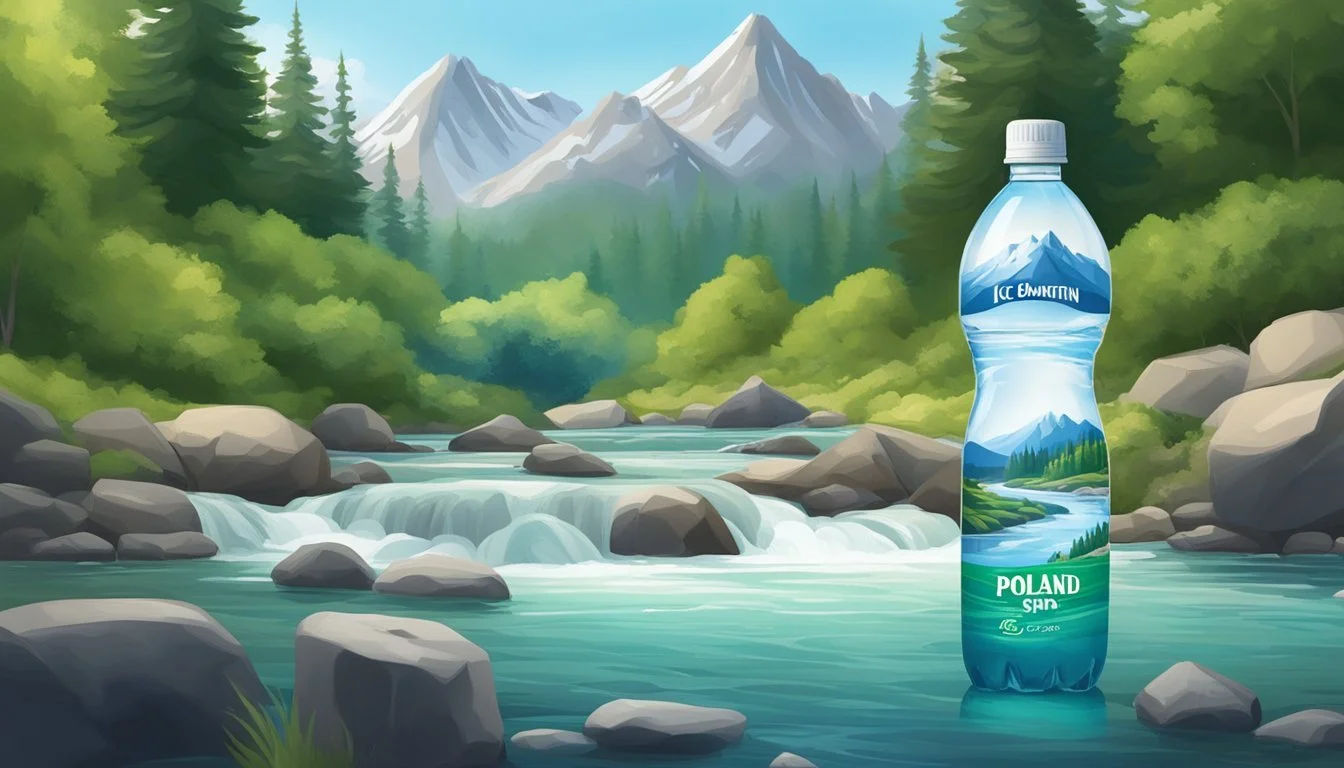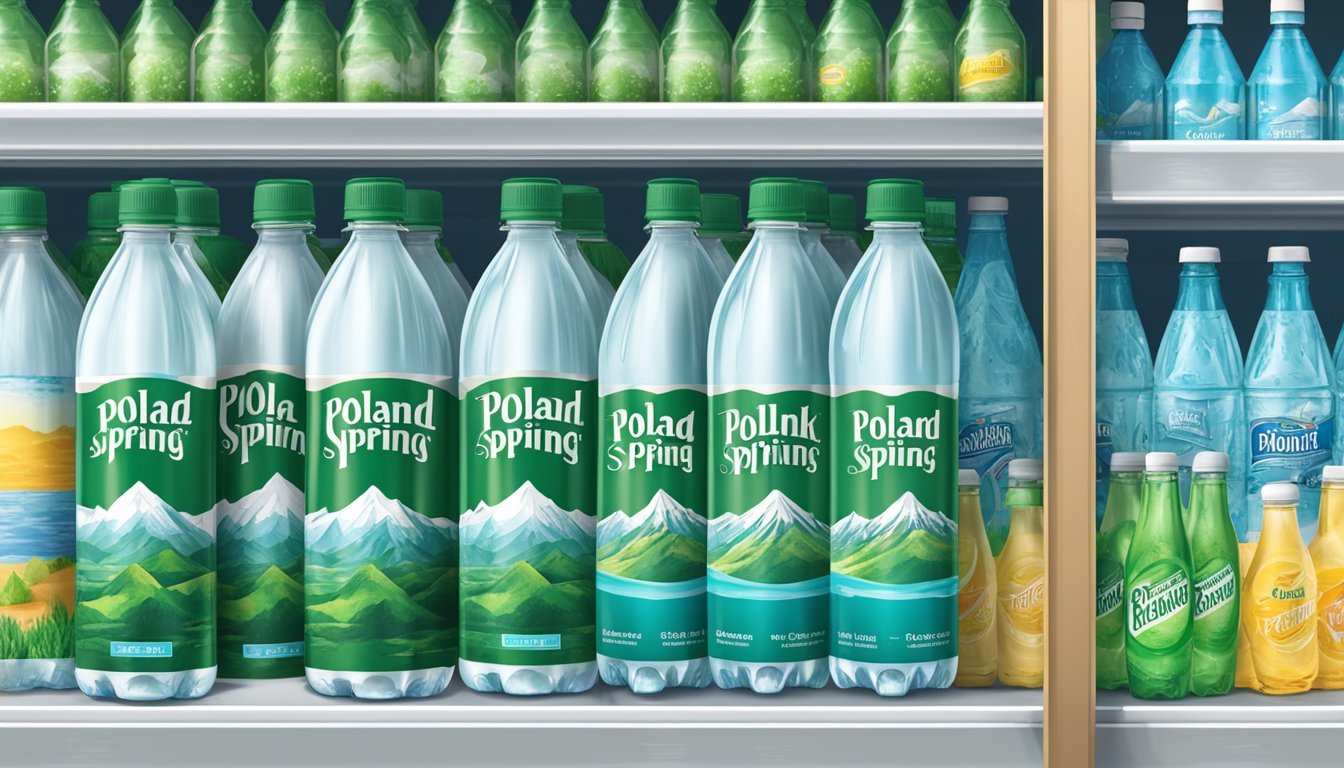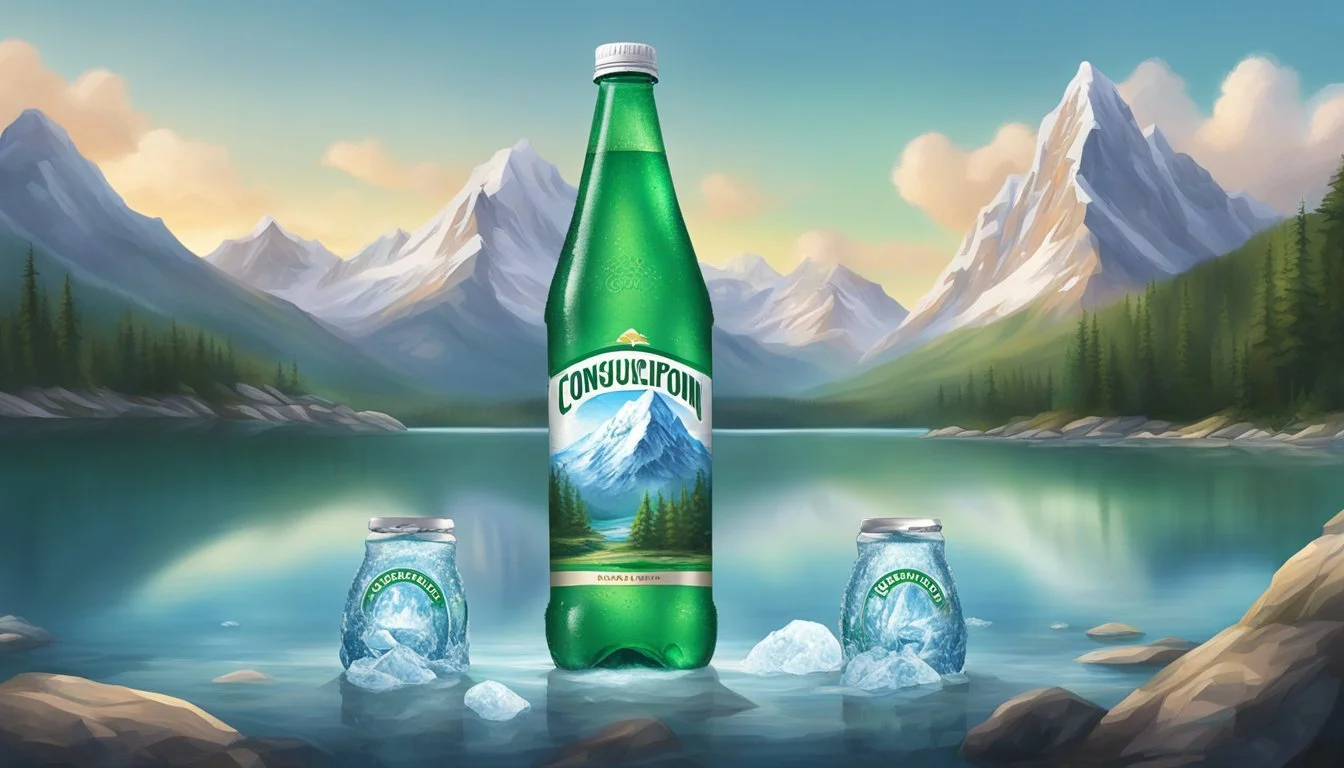Ice Mountain vs. Poland Spring
The Ultimate Bottled Water Comparison
Bottled water has become a staple in many people's lives due to its convenience and perceived purity. Among the plethora of options, Ice Mountain and Poland Spring are two prominent brands that consumers frequently encounter. Sourced from various springs across the Midwest, Ice Mountain is known for its refreshing taste and regional footprint. In contrast, Poland Spring originates from Maine and has established a strong presence in the American Northeast with a reputation for its crisp, clean flavor.
The debate over which bottled water is better does not hinge solely on taste, which can be subjectively evaluated, but also on factors such as the source and processing of the water. Ice Mountain sources its water from natural springs and claims to use a 10-step quality process to ensure the purity of its water. Poland Spring also emphasizes its natural sourcing, asserting that its water is 100% natural spring water. Consumers often weigh these factors, along with environmental and corporate practices, when choosing their preferred bottled water brand.
The Origin of Bottled Waters
Exploring the roots of bottled water brands reveals a rich history tied to natural springs and a journey from local sources to nationwide distribution. Each brand often starts with a unique spring story, shaping its identity and ethos.
Poland Spring: A Brief History
Poland Spring originates from the picturesque town of Maine, where it began bottling water in 1859. The brand's namesake is a natural spring once owned by Hiram Ricker, an operator of a local inn, who believed in the health benefits of the water. From barrels to the iconic "Moses" bottle in 1876, Poland Spring's journey encapsulates the profound connection between local natural resources and consumer products. Today, Poland Spring operates as a subsidiary of BlueTriton Brands.
Ice Mountain: Brand Insights
Ice Mountain sources its water from natural springs across the United States, including the revered spring in Colorado. Launched into the market by BlueTriton Brands, formerly Nestlé Waters North America, Ice Mountain emphasizes its commitment to sustainability and the environment. Known for its clean and fresh taste, it stands as a popular choice in a market concerned with source purity and ecological impact.
Quality and Purity Standards
In evaluating bottled water, such as Ice Mountain and Poland Spring, the focus on quality and purity standards is essential. These factors are crucial to ensure that the product is safe and of high quality for consumption.
The Role of the EPA and FDA
The U.S. Environmental Protection Agency (EPA) governs tap water, indirectly influencing the quality of source water used for bottling. In contrast, the Food and Drug Administration (FDA) regulates bottled water, enforcing standards for identity, quality, and safety. The FDA mandates that bottled water must meet the same stringent safety standards as public drinking water set by the EPA. These regulations cover contaminants such as microorganisms, chemicals, and radiological elements.
Understanding Third-Party Testing
Third-party testing provides an additional layer of assurance for consumers. Independent experts conduct thorough examinations that often surpass government requirements. For Ice Mountain and Poland Spring, third-party testing results can reveal:
Health-related contaminants: This includes checking for substances like lead, arsenic, or microbial hazards that could be harmful to health.
Purity levels: Experts assess the mineral content and presence of potential impurities.
The utilization of third-party testing signifies the brand's commitment to transparency and consumer trust.
Content and Health Implications
When comparing Ice Mountain and Poland Spring bottled waters, it's important to consider their mineral content and how this might affect health, alongside public and expert perspectives on taste and associated health benefits.
Mineral Content Analysis
Ice Mountain and Poland Spring both contain essential minerals such as calcium and magnesium, which are beneficial for bone health and metabolic function, respectively. The pH level of the water can vary, with Ice Mountain generally exhibiting a slightly more alkaline pH, which some prefer for its purported health benefits, although these claims lack conclusive scientific support. Here is a comparison of mineral content in much simpler terms:
Mineral Ice Mountain Poland Spring Calcium Moderate Moderate Magnesium Moderate Moderate pH Level Slightly Alkaline Neutral to Alkaline
Neither water contains significant levels of fluoride or chlorine, avoiding the potential for negative health implications associated with high levels of these substances.
Taste and Health Perceptions
The taste of bottled water can be subtly influenced by its mineral content, and some consumers report a preference for Ice Mountain for its clean and crisp taste, which may be attributed to its unique mineral blend. On the other hand, Poland Spring's taste is often described as refreshing and pure, potentially giving it an edge in taste tests.
In the domain of health perceptions, Ice Mountain and Poland Spring waters are both considered safe for consumption. Some consumers believe that higher levels of electrolytes and a more alkaline nature can lead to improved hydration and other health benefits, although these perceptions should not replace advice from healthcare professionals.
Environmental Impact and Sustainability
When comparing Ice Mountain and Poland Spring, one must consider the environmental impact primarily in terms of the materials used for packaging and the sourcing of the water, as these factors contribute significantly to the sustainability of each brand.
Bottled Water Packaging
Ice Mountain and Poland Spring, like many bottled water companies, primarily package their products in plastic bottles. Plastic bottles are a major concern for the environment due to their non-biodegradable nature and the energy-intensive processes involved in their production and recycling.
Ice Mountain:
Packaging materials include PET plastic, which is recyclable.
The brand has taken steps to reduce the amount of plastic used in bottles.
Poland Spring:
Announced initiatives to use 100 percent recycled plastic by 2022.
Aims to set an industry standard for sustainability with this commitment.
Water Source and Sustainability
The sustainability of a bottled water brand is also judged by its management and use of the water source.
Ice Mountain:
Sources water from both groundwater and public water sources.
Faced criticism for the impact on local water supplies and ecosystems, indicating potential sustainability concerns.
Poland Spring:
Claims its water is sourced from natural springs.
Has faced lawsuits challenging the legitimacy of the natural water source claims, raising questions about transparency and commitment to sustainability.
Both Ice Mountain and Poland Spring face challenges in demonstrating true environmental stewardship due to the inherent issues surrounding the bottled water industry. These concerns include the effects of extracting large volumes of water from natural and public water sources, potential degradation of those sources, and the environmental toll of widespread plastic use.
Consumer Considerations
When comparing Ice Mountain and Poland Spring, two widely recognized bottled water brands, consumers typically weigh price and brand reputation before making their purchase. Both factors can significantly influence buyer preference, given that the quality and taste of water are somewhat subjective.
Price Comparison
Price is a tangible factor in choosing between Ice Mountain and Poland Spring. Ice Mountain, often sourced from Midwest springs, may vary in price depending on the retail location. A comparison might look like:
Ice Mountain:
16.9 oz (24-Pack): $3.99 - $5.99
Poland Spring, originating from Maine, also fluctuates in price across different sellers. Its comparative prices might be:
Poland Spring:
16.9 oz (24-Pack): $4.99 - $6.99
Note: The above prices are subject to change and can vary by region and retailer. They are average prices that provide a general idea of the cost difference between the two brands.
Brand Reputation and Trust
Both Ice Mountain and Poland Spring are subsidiaries of larger parent companies renowned in the beverage industry. Ice Mountain is under the umbrella of Nestlé Waters North America Inc., while Poland Spring belongs to the Nestlé family of brands as well.
Consumers consider brand reputation and the degree of trust they have in the water's source and filtration process. For some, Poland Spring's long history—dating back to 1845—buoys its reputation. Alternatively, Ice Mountain's commitment to sustainability and providing natural midwestern spring water has won over a loyal customer base. Brand trust also comes from the companies' transparency regarding water sourcing and any enhancements or treatments applied to the water before bottling.
Water Types and Treatment Processes
When comparing bottled water such as Ice Mountain and Poland Spring, it's crucial to understand the differences between the types of water they offer and the treatment processes each undergoes. These factors can greatly influence taste, quality, and health benefits.
Spring vs. Purified Water
Spring water originates from underground sources and flows naturally to the Earth’s surface. Both Ice Mountain and Poland Spring offer products labeled as spring water. By definition, spring water must be collected at the spring or through a borehole tapping the underground formation feeding the spring. Treatment typically involves:
Filtration: Stripping out particulates.
Disinfection: Using UV light or ozone to eliminate pathogens.
On the other hand, purified water can come from any source, including springs, wells, or municipal tap water. It undergoes an extensive treatment process that includes:
Reverse osmosis: Removes dissolved inorganic solids by pushing tap water through a semipermeable membrane.
Distillation: Boils and recondenses water to purify it.
Tap Water vs. Bottled Water
Tap water is widely available and is often sourced from rivers, lakes, or reservoirs. Before reaching consumers:
It's typically filtered and disinfected using chlorine.
It must meet the Environmental Protection Agency (EPA) regulations.
Bottled water, such as Ice Mountain and Poland Spring, is regulated by the Food and Drug Administration (FDA). It may come from similar sources as tap water but undergoes additional treatment processes and is often marketed as being cleaner or healthier.
Alkaline water: This type of bottled water has a higher pH level than standard drinking water, which some brands claim can neutralize the acid in your body.
Mineral water: Contains naturally occurring minerals and trace elements, and is often effervescent from natural gases.
Hence, Ice Mountain and Poland Spring may offer different types of bottled water, including spring, purified, alkaline, and mineral water, each with varying treatment processes to ensure safety and quality.
Comparative Analysis
In this section, a detailed comparison between Ice Mountain and Poland Spring bottled waters is provided, alongside their comparison with other leading brands in the market. The analysis draws on factors such as source, taste, and market presence.
Ice Mountain vs. Poland Spring
Ice Mountain sources its water from multiple springs in the Midwest, specifically focusing on states like Michigan. Its bottled water is known for reflecting the natural minerals of the region, giving it a distinctive taste. Poland Spring, on the other hand, originates from Maine, with sources spread across different springs in the state. The brand also emphasizes natural filtration, and its taste profile is often described as crisp and refreshing.
When comparing the two, consumers might notice subtle differences in taste due to the unique mineral composition of their respective sources. Both Ice Mountain and Poland Spring maintain a strong brand presence in the Northeast, however, Poland Spring has broader recognition across the United States.
Versus Other Popular Brands
Ice Mountain and Poland Spring compete with a variety of other bottled water brands:
Aquafina and Dasani are notable for their purification process and added minerals for taste.
Evian stands out with its naturally occurring electrolyte composition and originates from the French Alps.
Fiji Water is known for its source in the Fijian islands, a tropical rainforest aquifer, and its soft, smooth taste.
Voss is marketed as a premium brand with artisan waters from Norway.
Moreover, enhanced water brands like Smartwater and Lifewtr provide additional electrolytes for taste and are marketed for their functional benefits. Core Hydration touts its water as having the optimal pH level for the human body.
In contrast, sparkling water brands like Perrier and La Croix offer a different experience with their carbonation and flavored options. Nestle Pure Life, being widely available, emphasizes affordability along with quality.
Italics and bold formatting throughout the section provide easy identification of brand names and key differences, supporting the reader in a straightforward comprehension of the comparative analysis. The neutral tone remains consistent, ensuring an unbiased approach to evaluating the characteristics of each brand.
Buying Guide
When selecting bottled water, it's important to understand what the label indicates and how your preferences for taste and intended use should influence your choice.
Reading the Label
One should pay close attention to the label on a bottle of water. The label provides vital information including the type of water—whether it is spring, mineral, purified, or artesian water. This designation not only affects the taste but also the mineral content which can vary significantly between sources. Additionally, it's critical to check for any added substances like electrolytes or flavors that might suit individual health needs or personal preferences.
Source: Indicates the origin of the water, which might affect purity and taste.
Contents: Look for details about minerals and other added components.
Processing: Information on filtration or purification techniques used.
Choosing Based on Taste and Use
The taste of bottled water can vary depending on its source and treatment process. Some individuals might prefer the crisp taste of spring water, while others might opt for mineral water with a distinctive flavor due to dissolved minerals. Furthermore, use case is a key consideration—whether the water is for daily hydration, pairing with fine dining, or perhaps for coffee and tea brewing, which might require a specific mineral composition for optimal flavor extraction.
Taste Preference: Some prefer flat water whereas others may enjoy a slight mineral taste.
Use Case: Consider if the water will be used for cooking, athletic activities, or simply sipping throughout the day.
By considering these factors, one can make an informed choice that aligns with their taste preferences and use cases.
Conclusion
When considering Ice Mountain and Poland Spring, consumers are often looking at several factors: hydration, health, and quality of the water.
Ice Mountain:
Region: Primarily marketed in the Midwest.
Source: Groundwater or public water supplies.
Process: Ozone sterilization and filtration.
Poland Spring:
Region: Northeastern U.S.
Source: Springs in Maine.
Process: Naturally filtered, meets FDA standards.
Both brands provide adequate hydration; however, the source and processing methods differ. Poland Spring's sourcing from Maine springs may appeal to those who prefer spring water's taste and mineral content. Conversely, Ice Mountain's commitment to using ozone sterilization ensures a clean, safe product.
Considering health, neither brand contains significant levels of contaminants or additives that would pose a health risk, making both options safe for consumption.
In terms of quality, individual preferences for taste and trust in the brand's source and filtration processes will guide decisions. Each brand maintains a commitment to quality assurance consistent with industry regulations.
Consumers should base their choice on personal preference for taste and regional availability. Both brands meet the necessary standards for safe drinking water and provide a convenient hydration solution.





